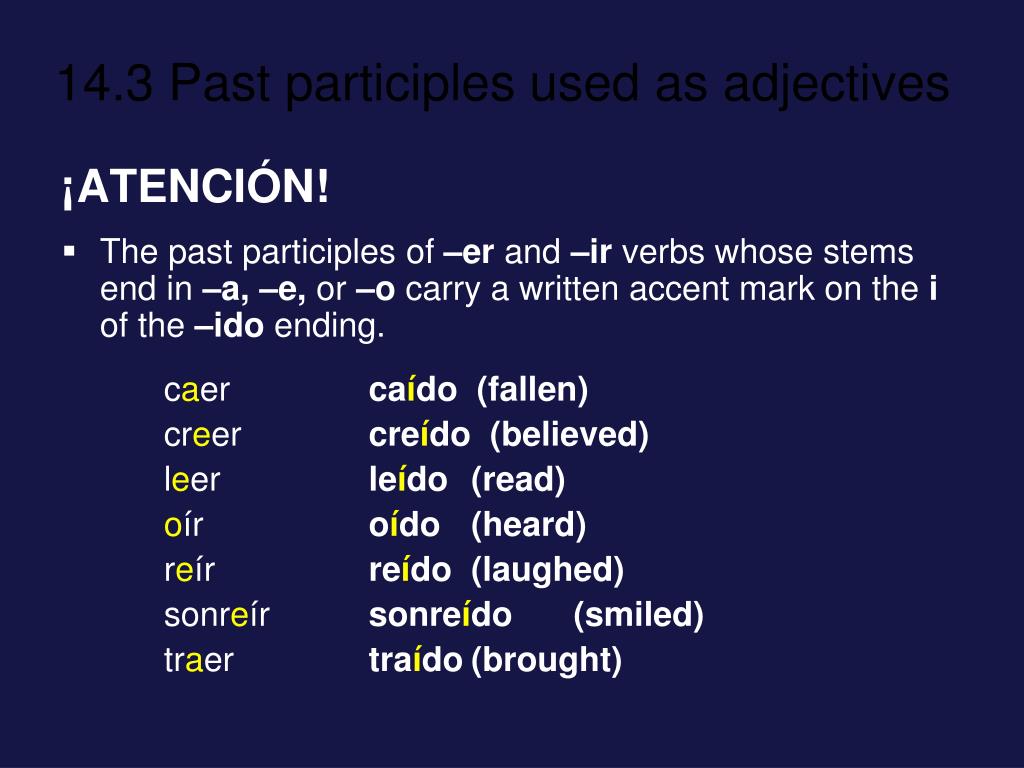

Whereas the sentence leía un libro sobre Séneca, albeit being also a past and finished action, expresses a different intention: maybe it was a repeated action, for example, I read Seneca every day during summertime. It may be used after a conjugated form of the helping verb, haber, as part of a compound verb (a verb tense that requires more. The participle (el participio) is a verb form in Spanish grammar and corresponds loosely to the English past participle (have done, have seen, have asked ). The past participle verb form has two uses.

This is not a conjugated form because it does not change to agree with the subject. The intention is that it happened once in the past, It also tells us that action is over now and finished in a time frame that is also past and has no connection with the present. The past participle is a specific form of the verb that usually ends in ado or ido. If the person wants to express that reading a book about Seneca is a life experience, then it will use the Perfecto, because the lifetime is still current – as long as the person is still alive, of course –.īut leí un libro sobre Séneca expresses a different intention and time frame. He leído un libro sobre Séneca means that this person read this book in a time frame that is still current: this week, this month, this year… this lifetime. But, what is the perspective + intent of the speakerwith each one, and second, what’s the time frame for each one? Let’s play with four sentences talking about the same action in the past.Īll of these sentences talk about an action ( reading a book) that happens in the past. There are two key elements to take into account when it comes to understanding the dance between the past tenses. One is the perspective + intent, and the other one is the time frame when that action takes place. In Spanish, just as in English, you can form past participles as adjectives, as long as you remember to match the number and gender of the noun that it’s modifying.


 0 kommentar(er)
0 kommentar(er)
